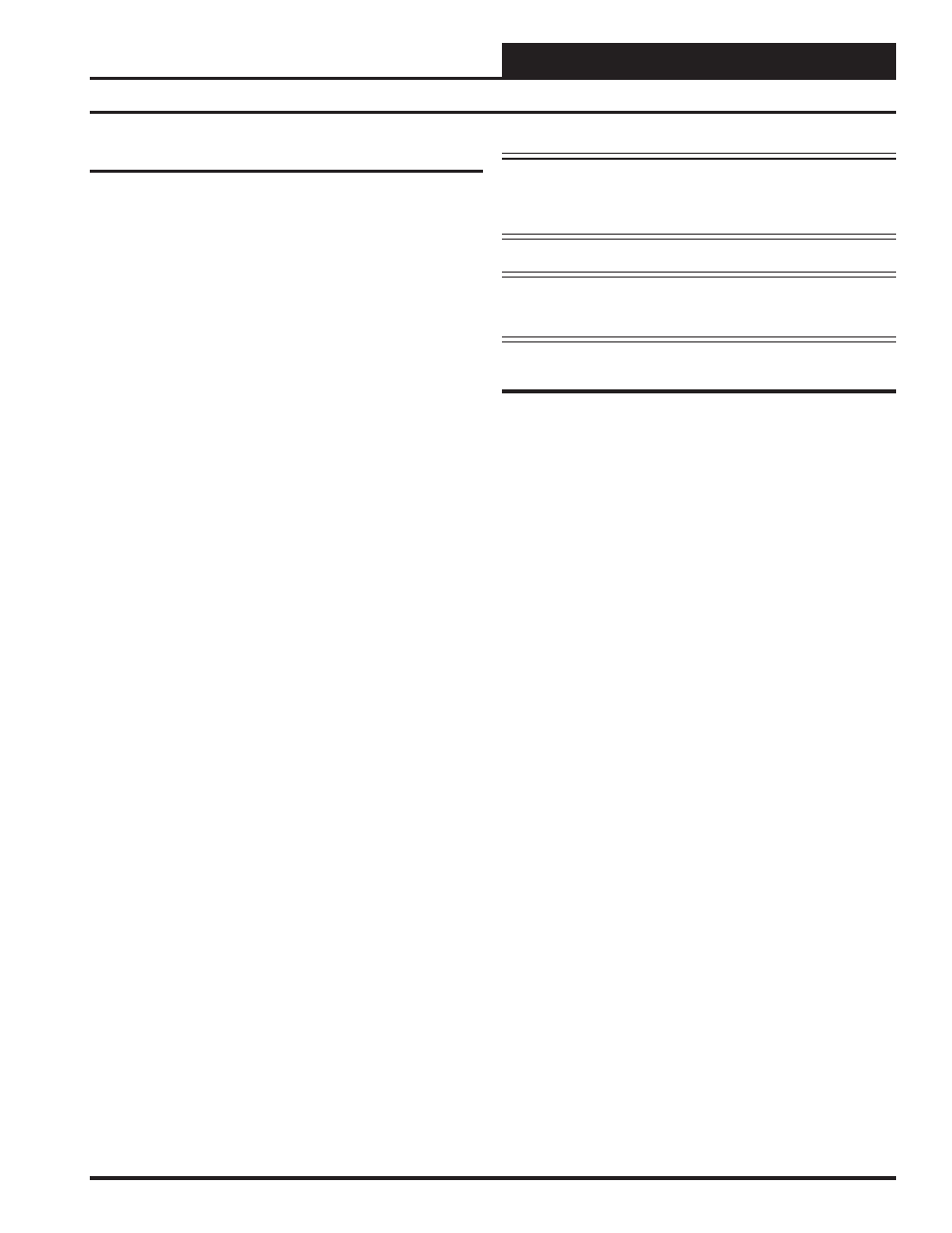Internal trend logging, Force modes or overrides, Internal trend logging & force modes – Orion System Modular VAV/Zone Controller User Manual
Page 27: Sequence of operations, 27 modular zcap technical guide

Internal Trend Logging & Force Modes
Internal Trend Logging
The VAV/Zone Controller continuously maintains an Internal Trend
Log, which records a fixed set of values at an interval programmed by
the user. These values can be retrieved only with the graphical front-end
program. In order to utilize these logs, a computer with Prism computer
software installed must be connected to the Orion system.
There are 120 log positions available. Once the last (120th) position
has been recorded, the log jumps back to the first position and begins
overwriting the old data. This means the user is required to retrieve the
logs at an interval that is shorter than the duration of the last 120 logs.
Shown below are some log intervals and the duration of 120 logs.
1 Minute Interval ............................2 Hour Duration
15 Minute Interval ..........................30 Hour Duration
30 Minute Interval ..........................60 Hour Duration
60 Minute Interval ..........................120 Hour Duration
The fixed items in the log are listed below with the column header in
parentheses:
•
Date (Date)
•
Time (Time)
•
Space Temperature (Space)
•
Active Cooling Setpoint (CoolSP)
•
Active Heating Setpoint (HeatSP
•
Supply Air Temperature (SAT)
•
Discharge Air Temperature (DAT)
•
Airflow (Airflow) [P.I. Units Only]
•
Damper Position (Damper)
•
Proportional Heat (Heat)
•
Current Operating Mode (Mode)
•
Space Temperature Mode (SPCMode)
•
SAT Mode (SATMode)
•
Fan Status (Fan)
•
Box Heat Stages
•
Auxiliary Heat Stages (Aux Ht)
Note:
For proper time and date stamping of the tenant log, you
must configure the VCM-X Controller to broadcast the
time so that the VAV/Zone Controllers can read it and
use it in their tenant and trend logs.
Caution:
These logs are subject to loss if a power outage
occurs because there is no battery-backed
memory on the VAV/Zone Controllers.
Force Modes or Overrides
The VAV/Zone Controller damper can be forced to one of several po-
sitions. These force modes aid the user during troubleshooting or air
balancing, etc.
•
Force Damper Full Open (Ignores Airflow Reading )
•
Force Damper Full Closed (Ignores Airflow Reading )
•
Force to Maximum Airflow/Damper Setpoint
•
Force to Minimum Airflow/Damper Setpoint
•
Force to Fixed Airflow/Damper Setpoint
•
Force Damper to Re-Calibrate
The Force to Fixed Airflow/Damper mode also has a setpoint associated
with it. This allows the user to provide a non-changing fixed amount
of air into the space that doesn’t affect the Minimum or Maximum set-
points. That means the user doesn’t have to disturb the real minimum
and maximum setpoints to achieve a nonstandard setting during their
troubleshooting or air balancing modes.
The Force to Minimum mode uses the currently active minimum set-
ting based on the Vent, Cooling, or Heating modes. Whatever mode
the VAV/Zone Controller is in determines the minimum used by the
force mode.
The damper force modes will remain in effect until cancelled by the user
or until the power is removed. Unlike the VCM-X Controllers which
require the initiating device to be present at all times during a force
mode, the damper force modes are more permanent since they are less
likely to damage any equipment. There are no force commands available
for the auxiliary relays.
27
Modular ZCAP Technical Guide
Sequence of Operations